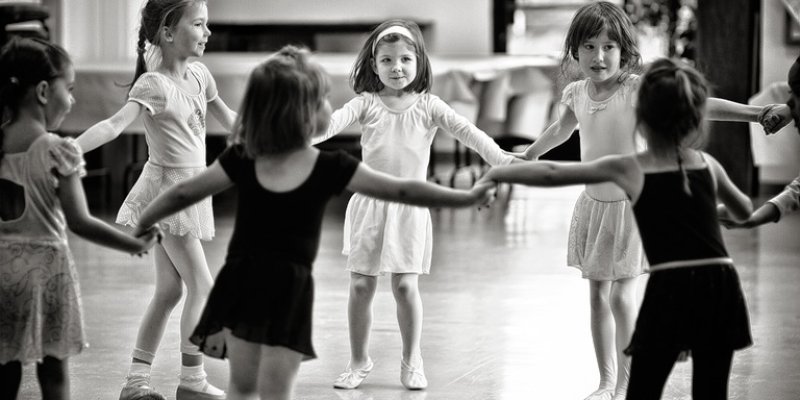
I find that people often get a kick about discovering the "real" and "dark" meaning behind a story, which makes up a huge amount of appeal to the mystery behind nursery lyrics like these.
It seems like so many children's tunes have dark pasts, including "London Bridge Is Falling Down" and "Humpty Dumpty".
Back in grade school, little kids were so eager to spread the "facts," including how "Rind Around The Rosie" was a song that originated from the Great Plague of London in 1665 that killed a quarter of the city.
This Plague was the last major attack of the Bubonic plague to hit Europe over several centuries, dating back to the Black Death in the 1300s.
And it's an easy story to sell when you take the most popular form of the lyrics in this kid's song that has been floating around the US into consideration:
"Ring around the Rosie, a pocket full of posies. Ashes! Ashes! We all fall down!"
Ashes? All falling down? Who wouldn't buy that this song has come a long way from the devastation that hit Europe and that children are just making light of a disaster for kicks?
Some say that the "ring around the Rosie" was a life-threatening rash that people were dealing with on their way to a horrible death.
But as it turns out, many scholars and historians have been arguing that this supposed dark meaning behind the lyrics is a flat-out lie. Is this song's interpretation more like folklore that was like a bad case of the telephone game throughout the years?
Related Post: 13 Vocal Warmups For Kids That Are Fun And Effective
There's one huge problem when it comes to the legitimacy of the song being birthed from plagues: publications didn't start mentioning this song until the late 1800s.
If the Black Death was happening in the 1300s, and the 1600s was when the song was birthed in London, why is there no evidence of this being mentioned until the late 1800s?
It could be because the lyrics, wherever they came from, did not originate from the trauma of bubonic plague sufferers.
You could say that the song's origins were just inspired by something that occurred several hundreds of years before, which has not been disproven. But it has definitely not been proven, either.
The version that is widely known in the UK goes, "Ring-a-ring o' roses, A pocket full of posies. A-tishoo! A-tishoo! We all fall down!"
Suddenly, things seem a bit less deadly with this version of the lyrics, and it sounds more like a cold or a light version of COVID instead of the Bubonic plague.
An early version published in 1884 by English writer Kate Greenaway had the following lyrics:
"Ring-a-ring-a-roses, A pocket full of posies; Hush! hush! hush! hush! We're all tumbled down."
A published 1883 collection of Shropshire folk-lore had the following version:
"A ring, a ring o' roses, A pocket-full o' posies; One for Jack and one for Jim and one for little Moses! A-tisha! A-tisha! A-tisha!"
That last line was supposed to be accompanied by children's acting like they were sneezing, which again doesn't match the Bubonic plague symptoms and story all that well.
There are several dozen versions of this song among children depending on the location they are growing up in with their friends, and they all seem to focus on the kids dancing in a circle and falling or doing something together at the end of the song.
There doesn't seem to be that much darkness to it, especially among the kids themselves. They are all just looking for an excuse to dance in a "ring" with their friends while singing and performing identical movements together as a form of bonding.
Who says the song has to have a negative side to it?
In my research, I came across a common theory that could paint the origins of these singing and dancing kid moments in a darker shade, but it is still far less dark than a plague.
According to a Mental Floss Magazine article in 2004, "'Ring Around the Rosie' is actually from the Victorian era, when many Protestants banned dancing.
Children found a way around the ban by having 'play parties,' and that's how the game originated. In fact, it's probably about nothing more than picking flowers."
Snopes backs up the theory by stating that the Protestants were banning many dances across Europe and America, and these so-called 'play parties' were done in circles or rings in a spin-off of square dancing, which children really loved doing.
Now, imagine a child being sinisterly stubborn and wanting to dance around with their friends back in the day without being stopped.
They would say to their elders that they aren't doing anything wrong and they are playing more of a game than doing a dance!
There is still a ton of mystery behind this song that will probably never be discovered, but there is a high chance that it is not about a deadly plague that swept across Europe centuries ago.
Related Post: All About Circle Singing And Its Benefits

As a session singer, writer, and producer that has worked with over 300 clients to provide high-quality jingles, singles, and features, Yona spends her time creating and marketing new music and helpful resources for creators. Check out Yona’s latest releases on her Spotify, her Youtube and share if you like it!
If you are in need of singer, songwriter or song producer services, see what Yona Marie can offer you on her services page.